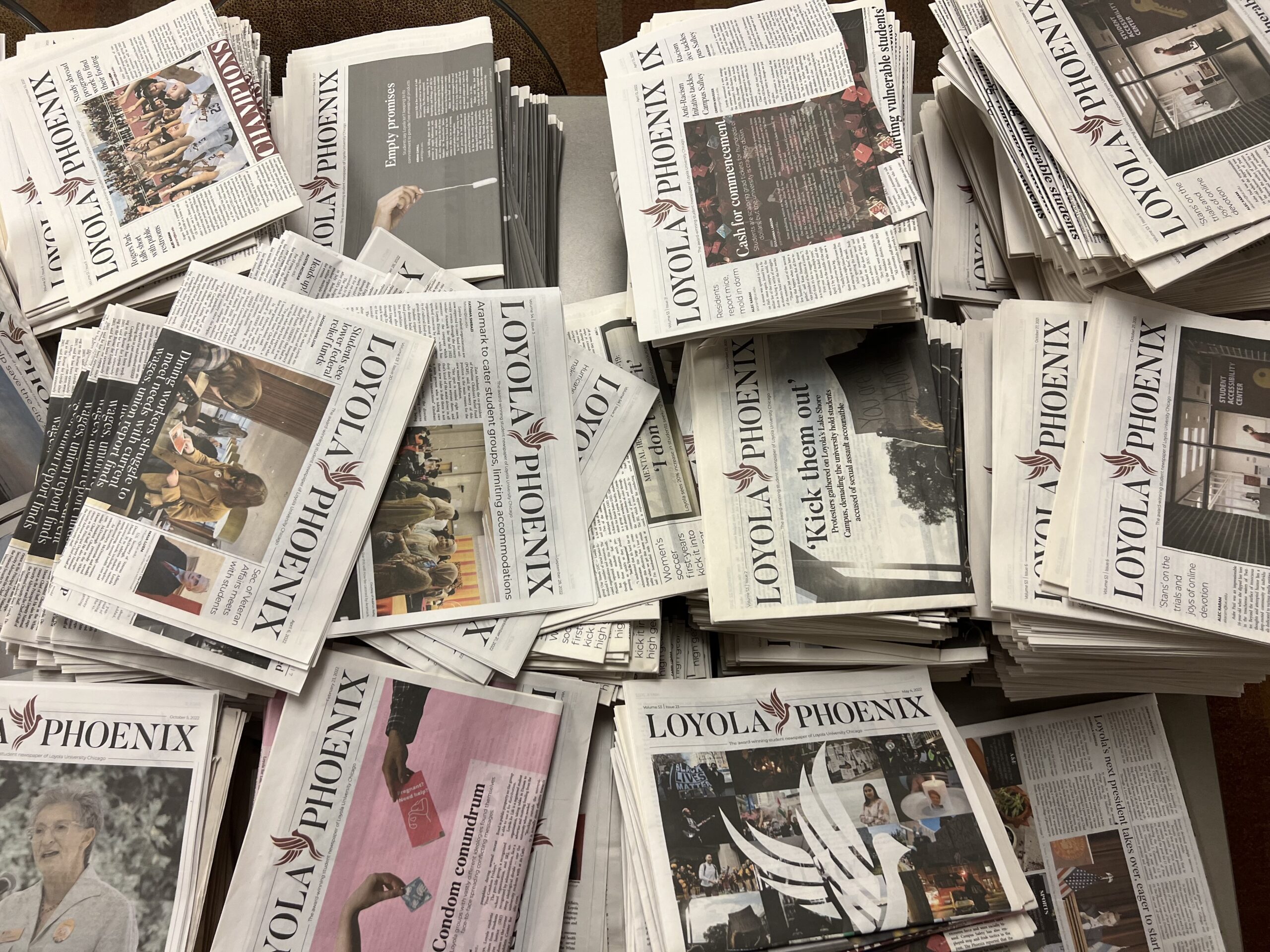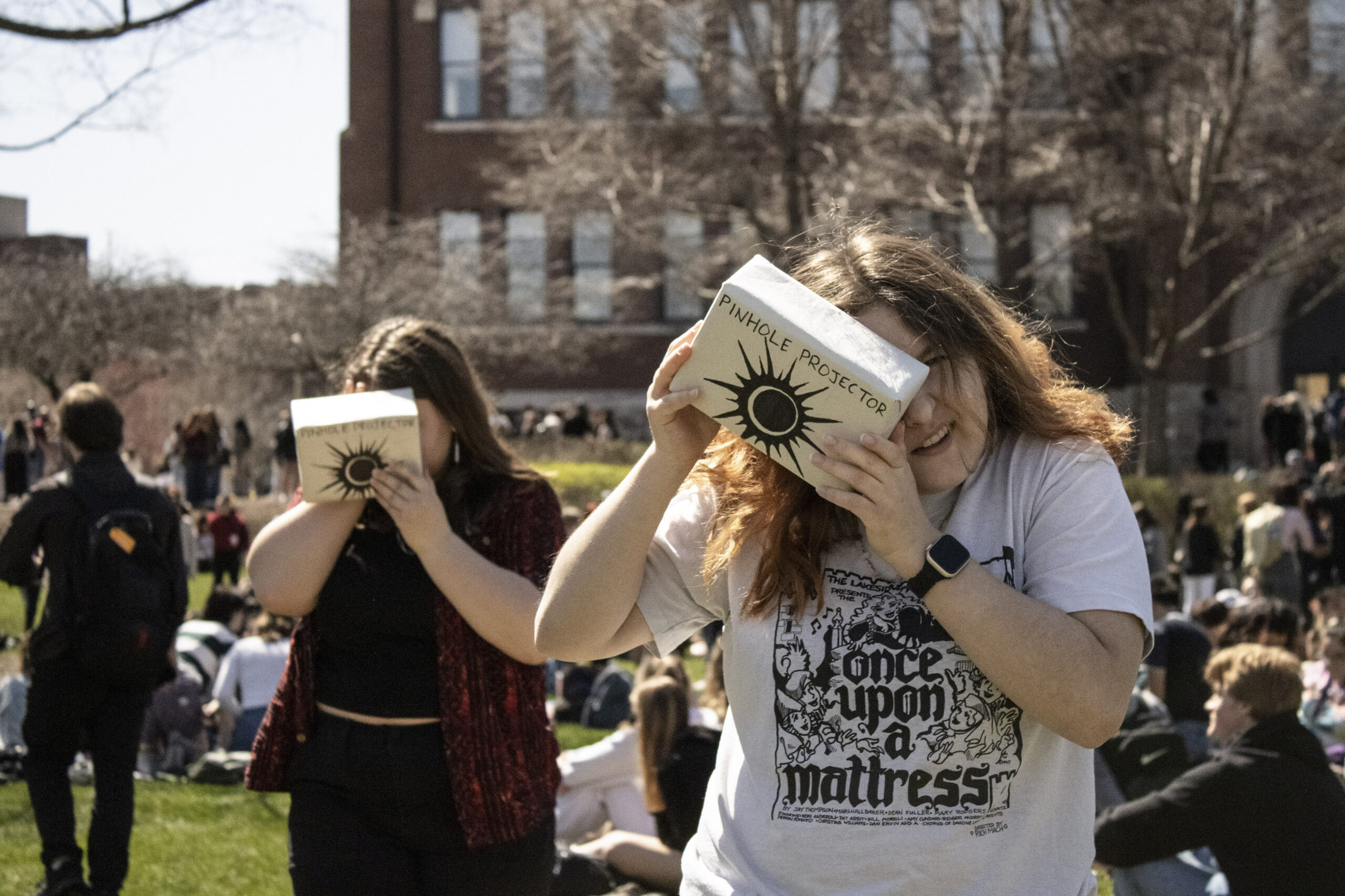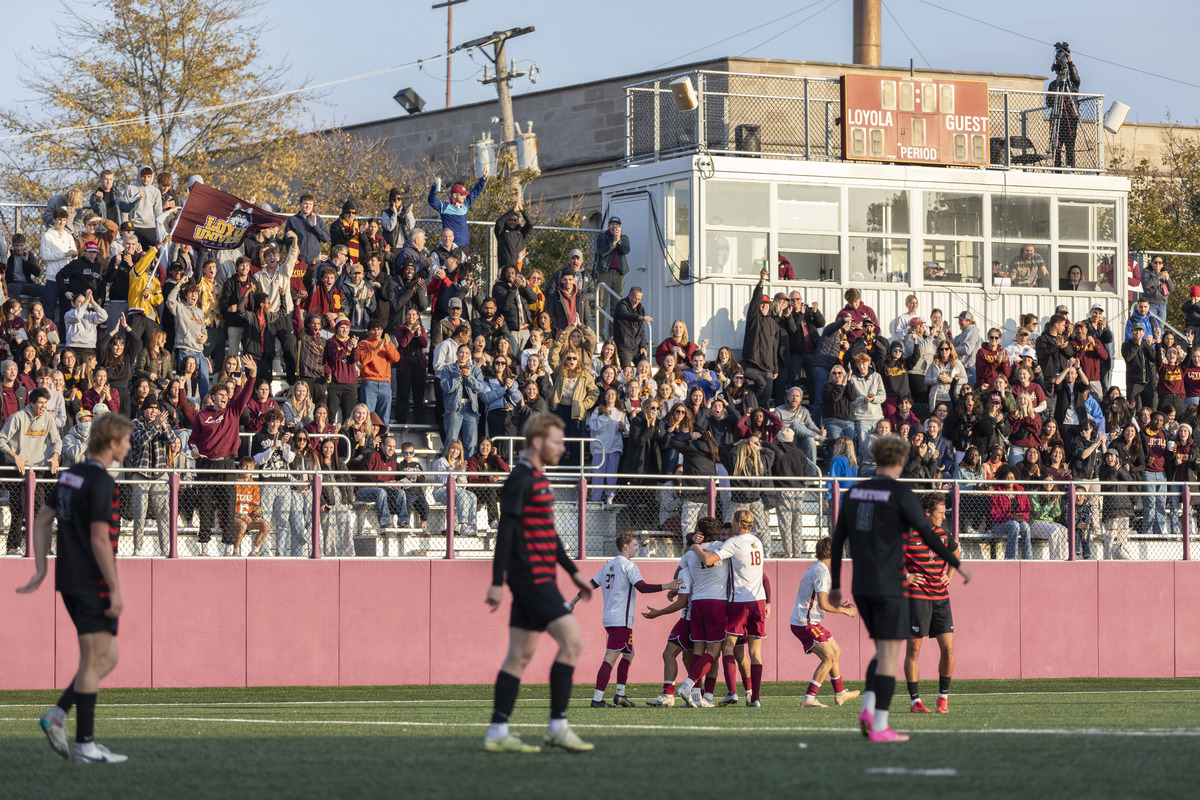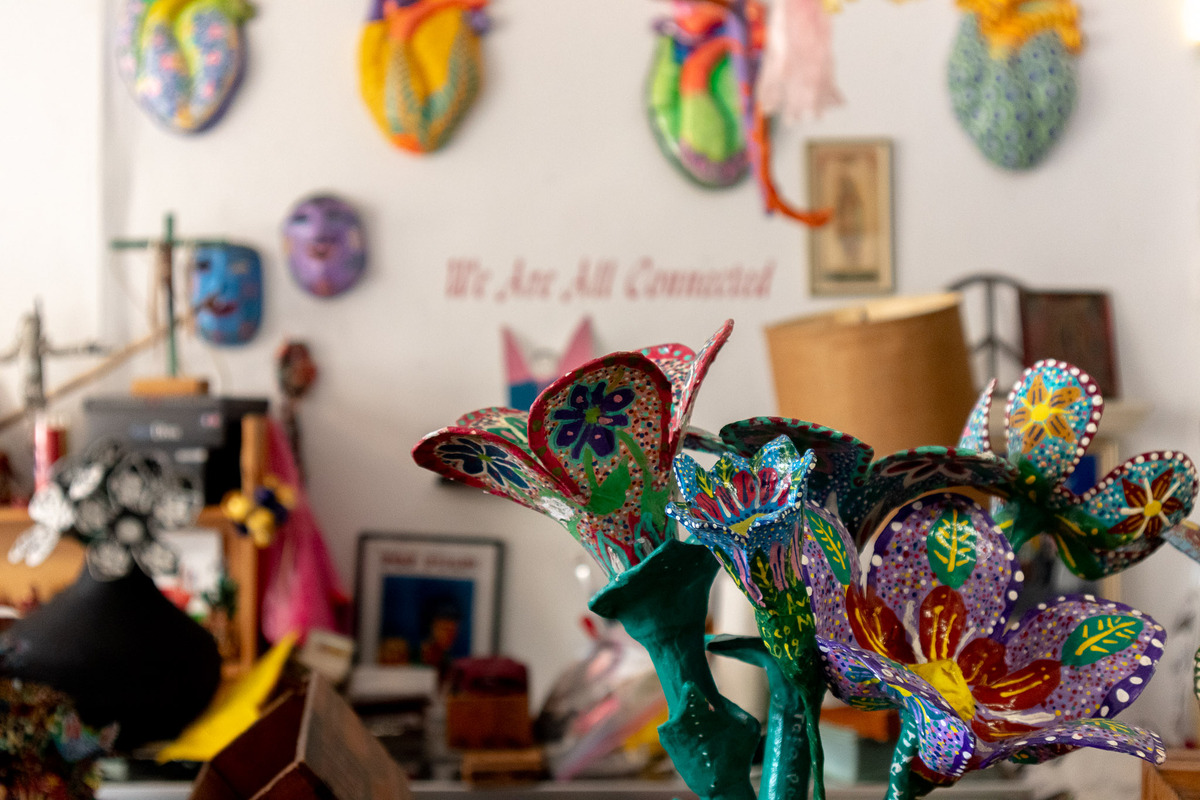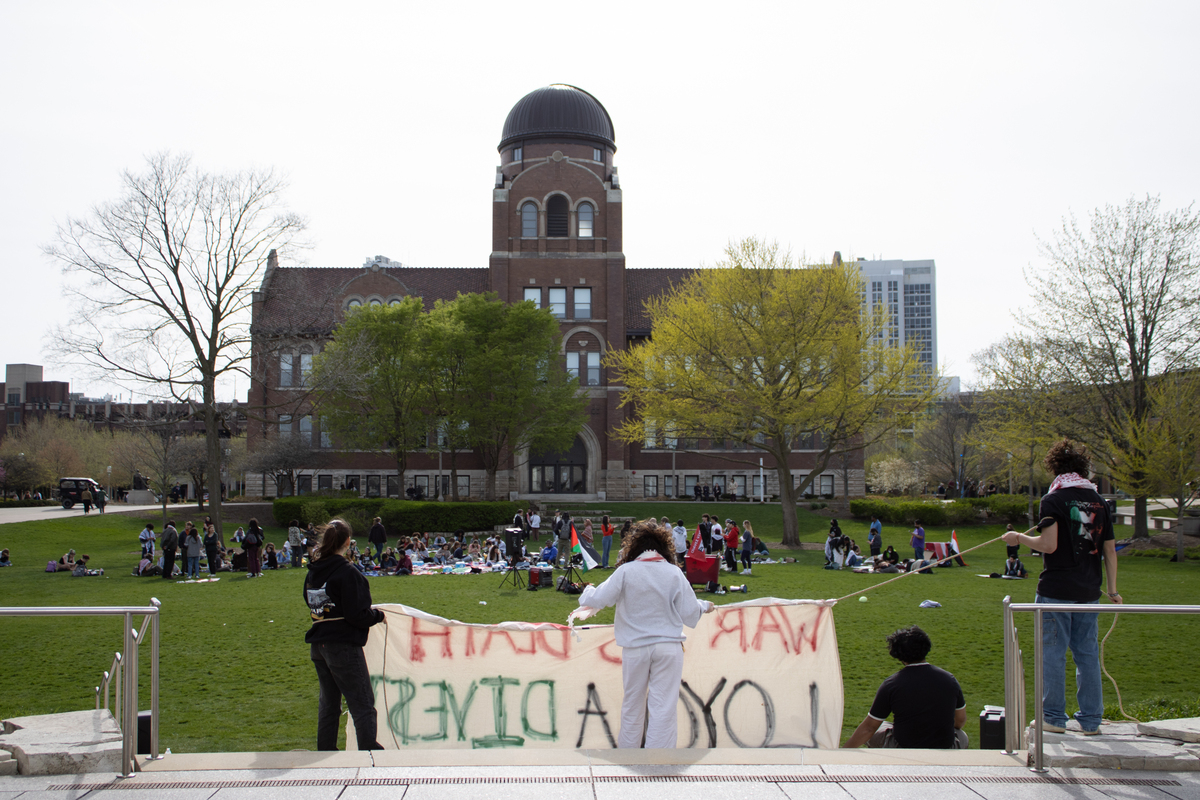The university is in the process of hiring another full-time staff member, as well as 20-25 student workers to help run day-to-day museum functions, according to Mathers.
Loyola University Museum of Art To Host Steve McCurry’s ‘ICONS’
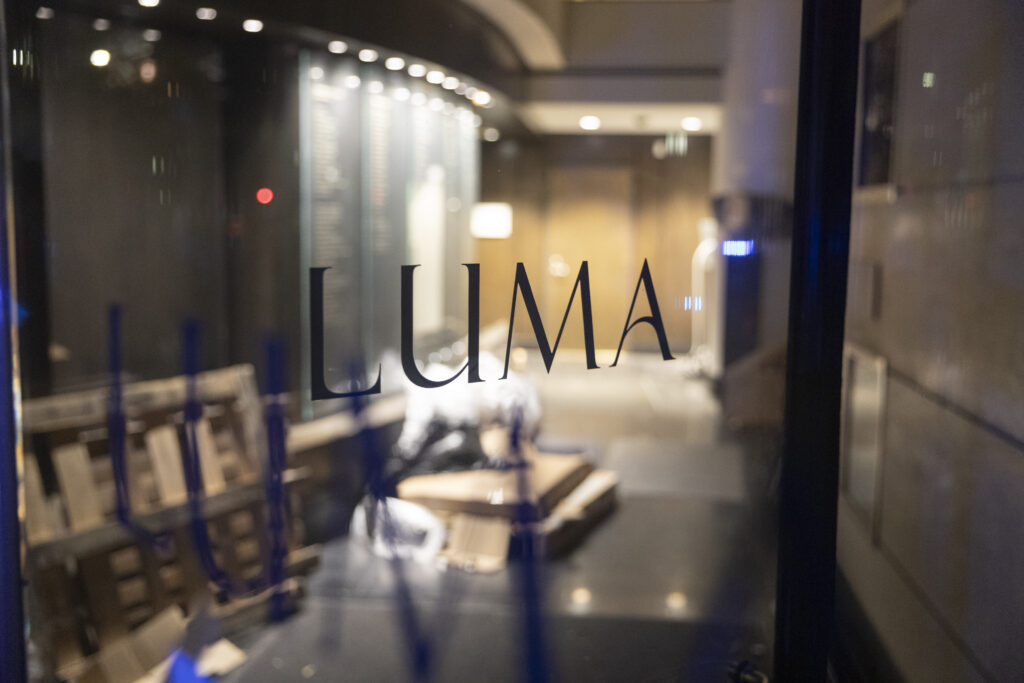
The Loyola University Museum of Art has partnered with live entertainment company FeverUp to host “ICONS,” an exhibit by contemporary photographer Steve McCurry.
LUMA is located at 820 N. Michigan Ave. on Loyola’s Water Tower Campus and will house the exhibit from Oct. 19 to March 31. “ICONS” will be the first public event hosted by the museum since its closure in 2019.
The museum officially closed due to its inability to generate revenue, The Phoenix previously reported. Dr. Paula Wisotzki, a professor of art history since 1993, said the university consistently depleted LUMA’s staff and resources before making the decision to close.
In addition to hosting “ICONS,” the university hired museum manager Kyle Mathers to facilitate operations and oversee the famed D’Arcy Collection. Mathers, a New Lenox native, received a master of arts in public history from Loyola in 2016.
The university is in the process of hiring another full-time staff member, as well as 20-25 student workers to help run day-to-day museum functions, according to Mathers.
“It’s exciting,” Mathers said. “It’s been challenging, too, just trying to pick back up and deal with a lot of the things that have kind of gone to the wayside over the last few years just because there hasn’t been a dedicated staff.”
LUMA opened in 2005 and was known for its exhibitions thematically related to religion and social justice, according to Wisotzki. She said it was a resource that made art accessible to students, faculty, researchers and the public.
The museum’s primary exhibit— the Martin D’arcy, S.J. Collection — has belonged to the university since 1969, according to the museum’s website. Wisotzki said the D’arcy Collection and its assortment of Catholic art and objects from the medieval, Renaissance and Baroque periods make the collection renowned.
The university celebrated the collection’s 50th anniversary the same year the museum was shut down.
Wisotzki said the LUMA’s closure was a “great tragedy” because it had attained museum accreditation in the year before it was shut down. Accreditation is an eight to 16 month process centered on self-study and peer review of the museum’s performance and goals, according to the American Alliance of Museums.
“It had a much more ambitious program at the beginning,” Wisotzki said. “There was a conscious decision on the part of the administration at that time that this would be a cultural institution that would bring Loyola’s relationship to the city and transform it.”
Dr. Sarita Heer, an art history professor, said she also grieved the museum’s closure because of the strength of the D’arcy Collection and its subsequent ability to provide opportunities to students and researchers alike.
“The D’arcy Collection is actually the best collection of medieval, Baroque and Renaissance art in the Midwest,” Heer said. “It’s been published in numerous publications. Some of it has gone to other museums like the MET, so this is not, like, just some small fry thing some random priest collected.”
The D’arcy Collection has been available to Loyola students on an appointment-only basis since the museum closed. Mathers said when he was hired as museum manager in May, the original plan was to reopen LUMA and the D’arcy Collection publicly in summer 2024.
However, the plan changed when FeverUp reached out about using LUMA’s exhibition space for McCurry’s “ICONS” exhibit. The expected publicity and potential to generate revenue played a large role in the university’s decision to host the exhibit, according to Mathers.
“The amount of expected visitation — we’ll see — should far surpass anything LUMA’s seen with an exhibit before,” Mathers said. “It seemed like a great opportunity that we really didn’t want to pass up, and so it just, you know, accelerated my timeline by, like, a year.”
Mathers said the “ICONS” exhibit was initially going to operate collaboratively with LUMA as a part of their grand reopening. However, Loyola decided to withdraw from the partnership and instead market LUMA as the venue for “ICONS,” postponing the D’arcy Collection’s public exhibition.
The university decided to separate LUMA’s reopening from “ICONS” so the museum can be the focal-point rather than conflated with the standalone exhibit, according to an email to The Phoenix from Loyola spokesperson Matt McDermott.
After “ICONS” ends March 31, plans will be shared regarding the future of LUMA and the D’arcy Collection, likely involving a reopening that collaborates with students, faculty or a local community, according to McDermott.
“The focus is supposed to be on being a resource for students,” Mathers said. “A lot of our exhibits and programs and shows will be collaborations across the university.”
In order to achieve this, Mathers has worked with professors in both the Art History and Public History departments to facilitate class visits to the D’arcy Collection. He also said LUMA will be partnering with Loyola’s Department of Fine and Performing Arts to host their senior art show this spring.
There is not currently an exhibition planned for summer 2024, according to Mathers.
“As soon as ‘ICONS’ is up and running, I’ll kind of shift my focus to start thinking about that,” Mathers said. “But it’ll definitely have to be something in collaboration with the students and faculty around the university.”
Although Mathers said he is hoping to expand LUMA and incorporate more student and community engagement into the museum going forward, he said he doesn’t feel pursuing museum re-accreditation or curating LUMA-specific exhibits will be possible until more full-time staff is hired.
“The general running of the museum and the taking care of collections and everything else that goes along with maintaining a museum of this size, we don’t really have the bandwidth to curate in-house exhibitions by ourselves like the museum did before,” Mathers said.
LUMA displayed over 150 exhibits from 2005 to 2019, according to their website. Heer, who specializes in non-Western art, said these were important exhibitions due to their dedication to expanding beyond the Eurocentric focus of the D’arcy Collection.
“They tended to try to have these exhibitions that were following the idea of this social justice mission and also this more global view of the world,” Heer said.
Heer said she believes the ability to educate the public and the student body through the D’arcy Collection and the diverse rotating exhibits made LUMA a prominent cultural locus.
“University museums aren’t supposed to make money,” Heer said. “They’re supposed to be a crown jewel of the university to show the sense of intellectual and humanistic interest.”
Despite the divergence from LUMA’s original function as an accredited museum and mechanism for displaying the D’arcy Collection, Wisotzki said she is looking forward to the prospect of expanding LUMA’s accessibility, even if it’s on a smaller scale.
“Even though it’s a very different scope of the institution, the fact that the university was willing to have a search and to hire Kyle is, to me, very exciting,” Wisotzki said.
Mathers also said he is looking forward to making LUMA’s presence more known throughout the campus and the community.
“There’s a lot of potential,” Mathers said. “I still want to make sure that every student feels like they belong at the museum — it’s their museum, you know? They belong here as a visitor, and possibly as a contributor. And it’s a resource.”
Steve McCurry’s “ICONS” will be on display in LUMA’s rotating gallery every day of the week from Oct. 19 to March 31. Tickets are available for purchase on Steve McCurry’s website and FeverUp.
Loyola students and faculty can make an appointment to tour the Martin D’arcy S.J. Collection by contacting LUMA directly by phone or email.
Featured image courtesy of Holden Green.



